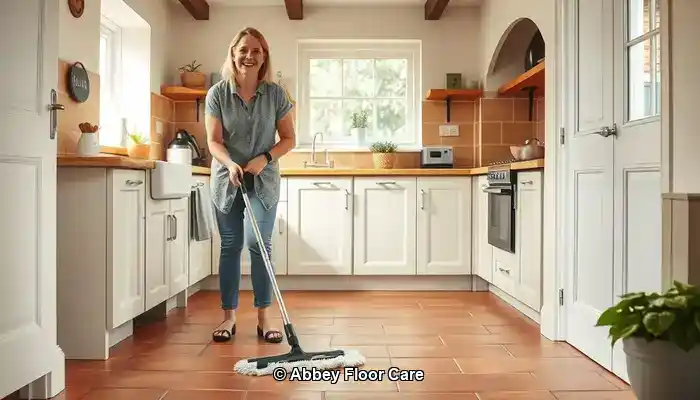
Last Updated on September 29, 2025 by David
Essential Techniques for Maintaining Pristine Terracotta Floors
-
- Terracotta’s Porous Nature makes it susceptible to swift dirt absorption, especially in humid regions like Surrey.
- Proper sealing is crucial to stop moisture and dirt from infiltrating the tile surface.
- Regular upkeep is vital—daily sweeping and weekly mopping with pH-neutral cleaners are essential for preserving the tile’s aesthetic.
- Refrain from using harsh chemicals and steam mops, as these can compromise the sealant and damage the tiles.
- Eco-friendly cleaning products are strongly advised, particularly in homes with pets or children.
- Consider hiring professional restoration services for comprehensive cleaning and resealing, which guarantees long-lasting protection.
- Strategically placed rugs and mats in high-traffic zones can significantly reduce dirt transfer onto the tiles.
- Effective moisture management is critical—ensuring adequate ventilation and quickly addressing spills will prevent staining and mould development.
Identifying Factors Contributing to Rapid Dirt Build-Up on Terracotta Tiles
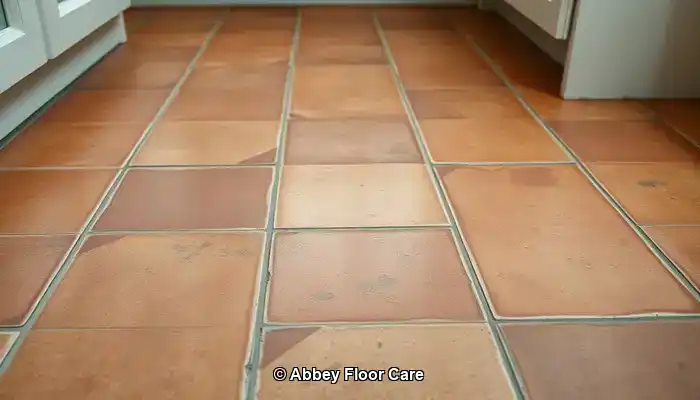
Terracotta tiles serve as an elegant flooring option, especially in traditional or rustic-style residences commonly found throughout Surrey. Their warm hues and natural texture significantly enhance the character and allure of any interior space. However, despite their visual charm, terracotta is notorious for its tendency to become dirty quickly. Recognizing the reasons behind this phenomenon is essential for effective cleanliness maintenance.
Expert Tip: Recommended Cleaning Solutions for Daily Care of Terracotta
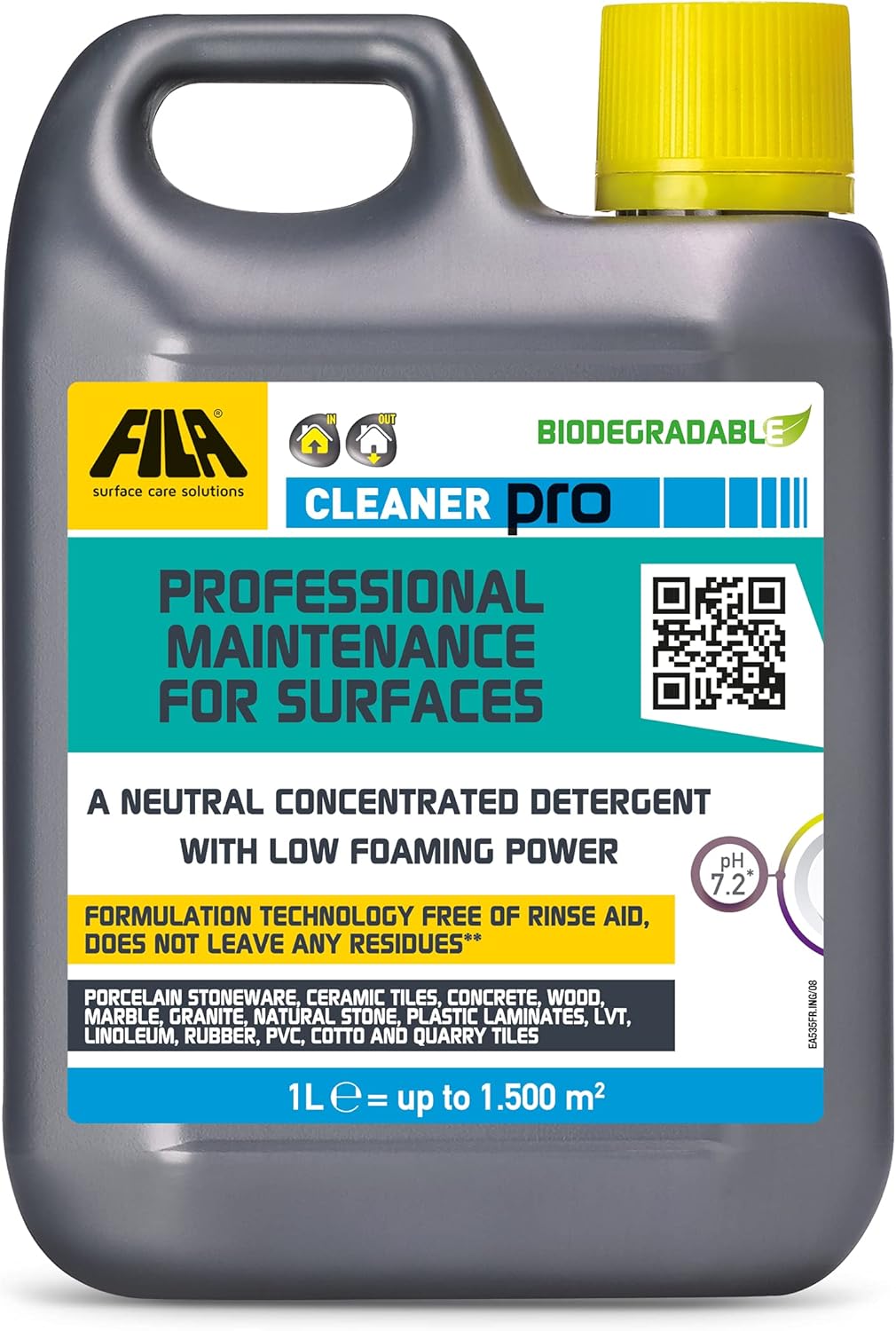
Fila Pro Floor Cleaner
|
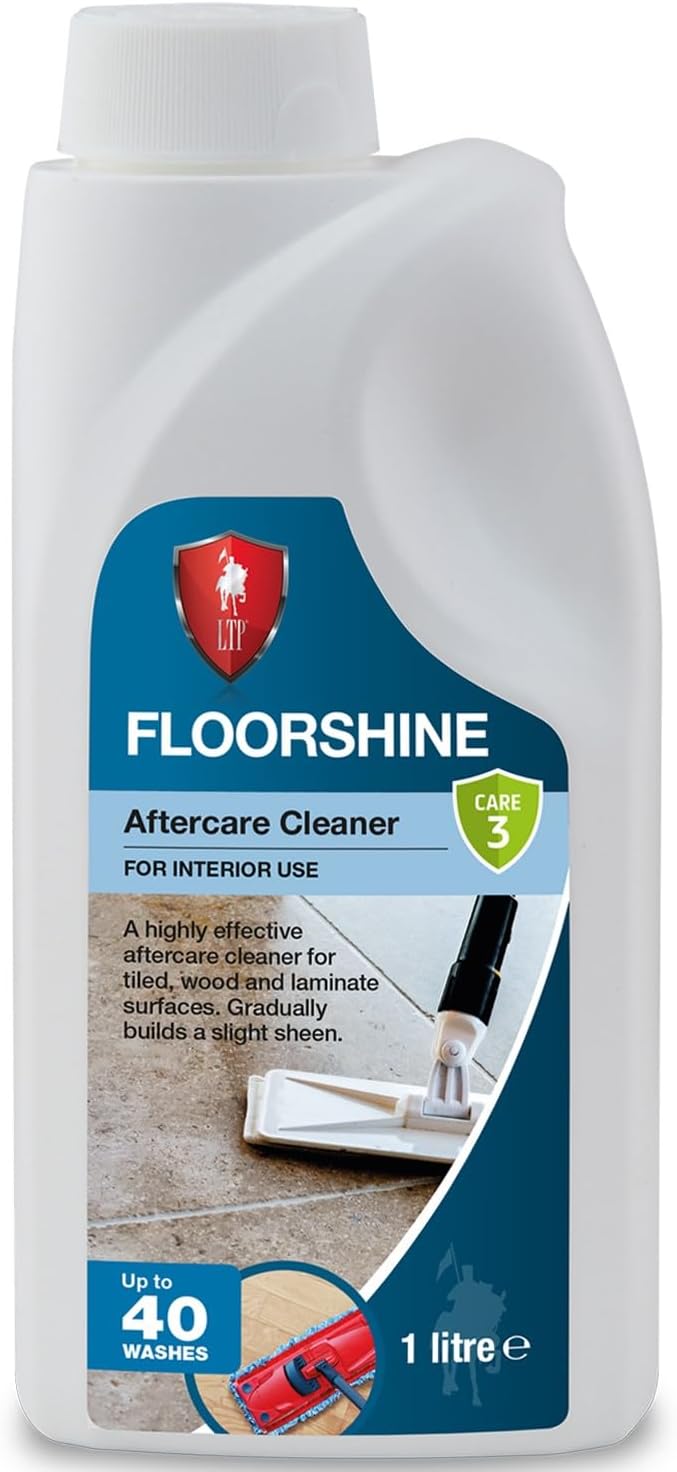
LTP Floorshine
|
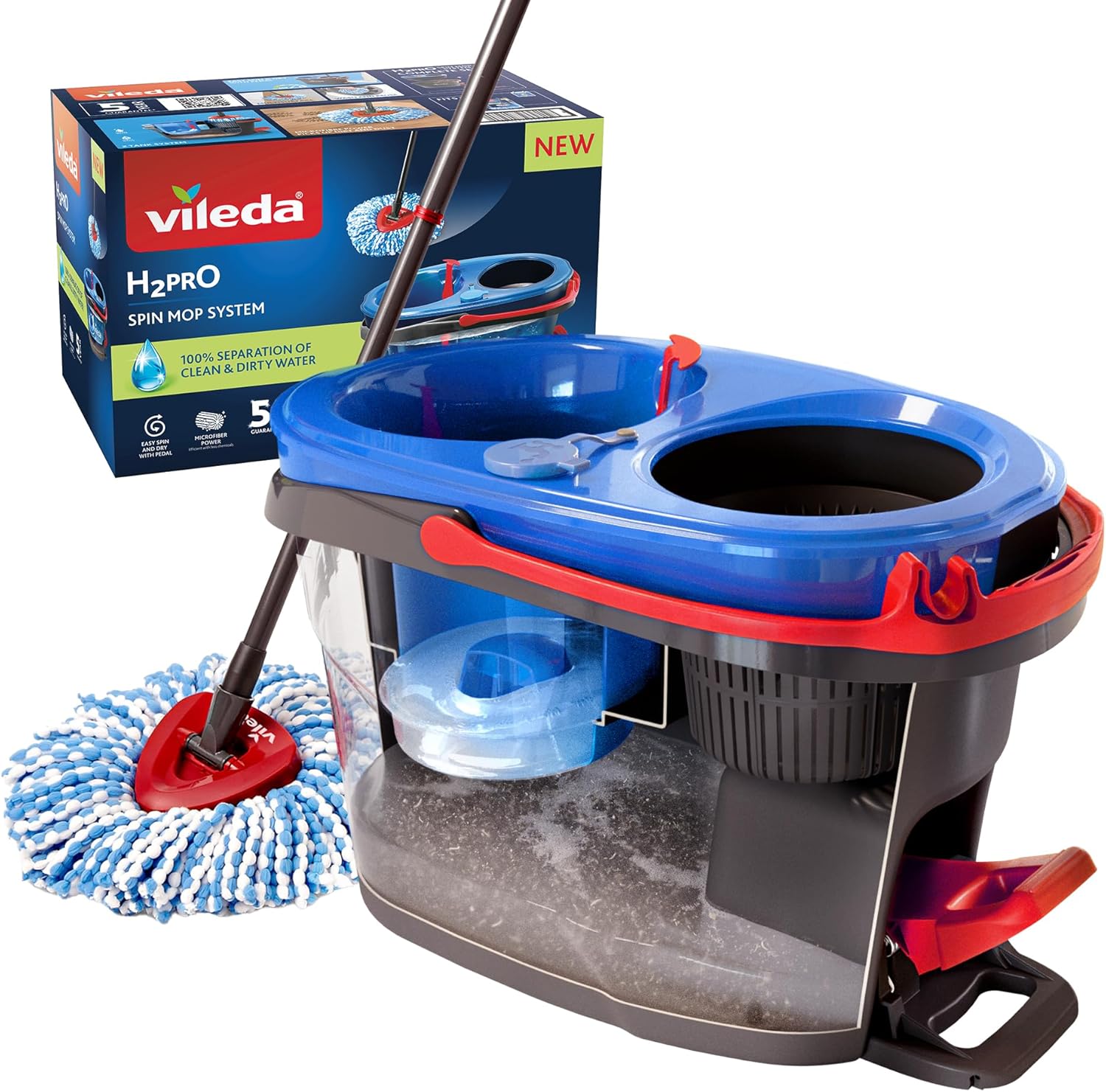
Vileda H2PrO Spin Mop System
|
Exploring Porosity: The Hidden Cause Behind Dirt Accumulation
Terracotta is crafted from natural clay and fired at lower temperatures compared to other types of tiles. This unique manufacturing technique creates a highly porous surface, allowing it to absorb moisture, oils, and dirt much like a sponge. Consequently, this porosity enables dirt to settle deeply within the tile, making it considerably more challenging to remove with standard cleaning techniques.
Unsealed terracotta is particularly vulnerable to staining. Without a protective layer, even minor spills or muddy footprints can lead to lasting marks. Over time, these elements contribute to a dull and stained appearance that is difficult to rejuvenate without professional intervention.
How Surrey’s Humid Climate Influences the Cleanliness of Terracotta Floors
The climate in Surrey significantly impacts the rate at which terracotta floors accumulate dirt. The region’s frequent rainfall and damp conditions result in increased moisture being tracked indoors, especially in entryways and conservatories. Properties located near wooded areas or gardens are even more susceptible. Soil, pollen, and organic debris can easily find their way onto terracotta surfaces, particularly if footwear is not removed at the door.
Everyday Habits Contributing to Increased Dirt Accumulation on Terracotta Floors
Alongside environmental factors, daily habits can exacerbate the situation. Using inappropriate cleaning products—such as acidic solutions or bleach—can strip protective coatings and harm the tile’s surface. While steam mops are often favored for their convenience, they can inadvertently drive moisture deeper into the tile, worsening cleanliness challenges. High-traffic areas like kitchens and hallways are naturally more prone to wear and tear. Without diligent sweeping and mopping, dirt can accumulate quickly and become embedded in the tile’s texture.
Effective Preventative Measures for Immaculate Terracotta Floors
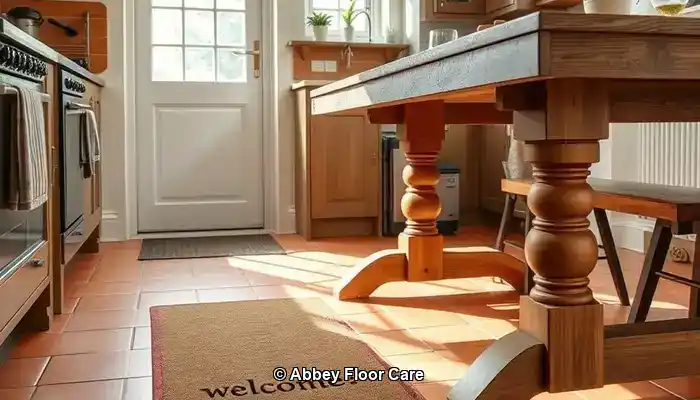
Maintaining terracotta floors in excellent condition requires more than just reacting to dirt; it necessitates proactive strategies to prevent grime from settling in the first place. In Surrey homes, where damp weather and garden traffic are prevalent, vigilant care is essential for preserving the natural beauty of terracotta tiles.
Sealing: Your First Line of Defense Against Dirt Infiltration
The most effective approach to prevent terracotta from becoming dirty quickly is through proper sealing. A high-quality, breathable sealant creates a protective barrier that repels moisture, oils, and dirt. In Surrey, where humidity levels fluctuate, sealing is vital to inhibit water absorption that could lead to staining and mould growth.
Experts recommend resealing terracotta every 12 to 18 months, depending on foot traffic and exposure levels. In high-use areas such as kitchens, hallways, and conservatories, more frequent sealing may be necessary. Always select a sealant specifically designed for porous stone and avoid glossy finishes that could trap dirt on the surface.
Smart Design Choices: Utilizing Rugs and Mats for Floor Protection
Strategically placing rugs and mats can dramatically reduce the amount of dirt that reaches your terracotta tiles. Employ heavy-duty doormats at entrances to catch mud and moisture before they enter your home. In high-traffic zones like hallways or beneath dining tables, area rugs serve as a protective barrier that shields the tile from wear and tear.
For rooms that connect to outdoor spaces, consider washable runners that can be routinely cleaned. These not only help preserve the tile but also introduce warmth and style to your interior design.
Effective Moisture Management Techniques for Surrey Homes
The prevalent climate in Surrey, characterized by rain and dampness, can accelerate dirt accumulation on terracotta. To counter this, employing dehumidifiers in enclosed areas and ensuring proper ventilation throughout your home is advisable. Promptly clean up spills and avoid leaving wet items—like shoes or towels—on the floor.
If your terracotta is installed in a conservatory or garden room, consider adding blinds or UV filters to reduce condensation and prevent sun damage. These minor adjustments can yield significant benefits for the longevity of your tiles over time.
By combining sealing, intelligent design choices, and moisture management, homeowners in Surrey can significantly decrease the rate at which terracotta floors become dirty. In the following section, we will delve into the best cleaning practices to maintain a fresh and natural appearance day after day.
Optimal Cleaning Techniques for Terracotta Tiles
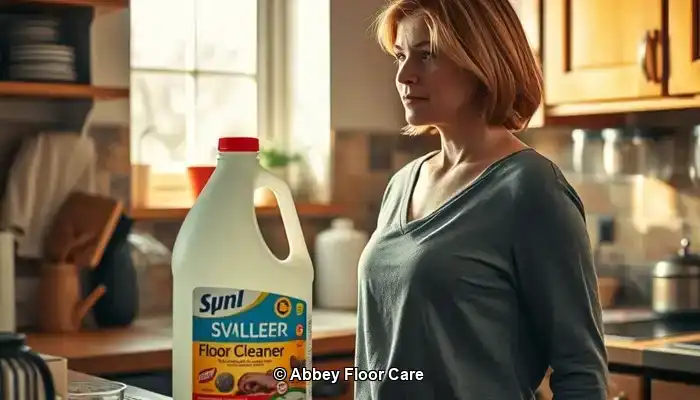
Even with the right sealing and preventative measures in place, terracotta floors require regular attention to sustain their natural beauty. The key lies in employing appropriate techniques and products that clean effectively without damaging the porous surface of the tile.
Establishing a Comprehensive Daily and Weekly Cleaning Routine
In Surrey homes, where outdoor elements frequently enter, daily sweeping or vacuuming is essential. Use a soft-bristle broom or a vacuum with a hard floor setting to eliminate dust, grit, and organic debris before it embeds into the tile.
For weekly maintenance, mop the floors with warm water and a pH-neutral cleaner specifically designed for natural stone. Avoid soaking the floor—damp mopping is the preferred method. Excess water can seep into the tile and lead to staining or mould growth, particularly in older or inadequately sealed installations.
Selecting the Right Products for Optimal Terracotta Care
Choose products that are both gentle and effective. Look for labels indicating “stone-safe,” “non-acidic,” or “pH-neutral.” In Surrey, where environmentally friendly living is increasingly valued, many homeowners prefer biodegradable cleaners that are safe for both pets and children.
Avoid multi-surface cleaners containing bleach, ammonia, or citrus extracts. These substances can strip away sealants and etch the terracotta, making it more vulnerable to future staining.
For stubborn spots, utilize a soft cloth with a diluted solution of stone cleaner. Never scrub with abrasive pads or wire brushes—these can scratch the surface and complicate future cleaning efforts.
What to Avoid: The Dangers of Harsh Chemicals and Steam Cleaning
While steam mops may seem convenient, they are not suitable for terracotta. The high heat and moisture can penetrate the tile, weakening the sealant and causing lasting damage. Similarly, acidic cleaners like vinegar or lemon juice—even when diluted—can erode the tile’s surface and lead to discolouration.
Stick to gentle cleaning methods and always test new products on a small, inconspicuous area before widespread application across your floors.
Evaluating Professional Care Versus DIY Maintenance for Terracotta Floors
When it comes to maintaining terracotta floors, many homeowners in Surrey begin with DIY methods. While routine sweeping and mopping are indeed beneficial, there comes a time when professional assistance becomes essential.
When to Consult a Tile Specialist in Surrey
If your terracotta tiles exhibit signs of deep staining, uneven colour, or surface wear, it may be time to reach out to a professional. Tile care specialists in Surrey utilize advanced equipment and stone-safe products that penetrate deeper than household cleaners. They can also evaluate whether your sealant has deteriorated and propose a suitable resealing schedule tailored to your home’s specific conditions.
Restoration services typically encompass deep cleaning, stain removal, and the reapplication of breathable sealants that protect without altering the tile’s natural look. For older homes or heritage properties, specialists can even replicate the original finish to maintain authenticity.
Cost Analysis: Is Professional Care a Worthwhile Investment?
Although DIY cleaning might seem more cost-effective initially, it often results in only temporary outcomes. Without adequate sealing and deep cleaning, dirt continues to accumulate—leading to more frequent maintenance and the risk of irreversible damage.
In contrast, professional care extends the lifespan of your terracotta floors. A single restoration session can rejuvenate colour, eliminate embedded grime, and protect the surface for months or even years. In high-traffic areas like kitchens or hallways, this investment pays off through reduced maintenance and enhanced visual appeal.
Homeowners in Surrey who prioritize long-term property care and aesthetic appeal often find that expert services provide peace of mind and superior results. Additionally, many local providers offer eco-friendly options and customized maintenance plans tailored to your lifestyle.
Eco-Conscious and Safe Cleaning Solutions for Terracotta
The natural allure of terracotta deserves care that aligns with environmental sustainability. For homeowners in Surrey aiming to maintain their floors without compromising health or ecological integrity, eco-friendly cleaning is the optimal choice. Thankfully, modern products and techniques empower you to safeguard your tiles—and your home—without resorting to harsh chemicals.
Selecting Eco-Friendly Sealants and Cleaning Solutions
Conventional sealants often contain solvents that emit volatile organic compounds (VOCs), which can linger in the air and negatively impact indoor air quality. Today’s eco-friendly alternatives utilize water-based formulas that are low in VOCs and safe for use around children and pets.
When choosing a cleaner, look for labels that mention “biodegradable,” “plant-based,” or “stone-safe.” These products are formulated to lift dirt without harming the porous surface of terracotta. Brands specializing in natural stone care frequently offer concentrated solutions that can be diluted for daily use, minimizing waste and packaging.
Safe Options for Homes with Pets and Children
In busy Surrey households, safety should be as crucial as cleanliness. Steer clear of bleach, ammonia, and acidic cleaners like vinegar, which can damage the tile and pose risks to pets and young children. Instead, opt for gentle formulas derived from coconut oil derivatives, citrus enzymes, or mineral-based ingredients.
For those who prefer DIY cleaning, a simple mixture of warm water and a few drops of castile soap can be surprisingly effective for light cleaning. However, always conduct a test on a small area first to ensure it does not adversely affect the sealant or finish.
Implementing Sustainable Cleaning Practices
Eco-friendly maintenance encompasses not only product selection but also cleaning habits. Utilize reusable microfiber cloths and mops instead of disposable pads. Regular sweeping minimizes the need for frequent wet cleaning. When resealing, choose products that feature recyclable packaging and minimal environmental impact.
Numerous floor care professionals in Surrey now offer green cleaning packages, utilizing certified non-toxic products and sustainable methods. If you are uncertain where to begin, scheduling a consultation with a local expert can assist you in developing a routine that is both efficient and environmentally responsible.
Ensuring Your Terracotta Floors Maintain Their Stunning Appearance
Terracotta flooring adds warmth, character, and timeless appeal to homes in Surrey; however, its porous nature demands intentional care to uphold its cleanliness and vibrancy. By understanding the reasons behind rapid dirt accumulation, ensuring proper sealing, and adopting effective cleaning habits, you can dramatically reduce grime buildup and prolong the lifespan of your tiles.
Whether you manage a busy household or are restoring a historic property, consistency is essential. Daily sweeping, pH-neutral cleaning, and seasonal resealing contribute significantly to maintaining an attractive appearance. When stains or wear begin to show, do not hesitate to seek the help of a local specialist for professional restoration.
Utilizing eco-friendly products and safe cleaning routines guarantees your floors remain beautiful while safeguarding your health and the environment. With the right approach, terracotta can remain a stunning feature in your home for many years to come.
Are you ready to intelligently protect your floors? Contact us today for expert terracotta maintenance tailored to the unique conditions of Surrey. Let’s ensure your home looks its finest—naturally.
Frequently Asked Questions About Terracotta Maintenance
Terracotta floors are a classic choice, but they require specific care. Below are answers to some of the most frequently asked questions from homeowners in Surrey eager to keep their tiles clean, protected, and visually appealing.
How Frequently Should I Reseal My Terracotta Tiles?
In most Surrey homes, terracotta should ideally be resealed every 12 to 18 months. However, this timeframe may vary based on factors such as foot traffic, moisture exposure, and whether the tiles are installed indoors or outdoors. Areas like kitchens, hallways, and conservatories may require more frequent resealing. If your tiles appear to absorb water or look dull, it is time to consider resealing.
Is It Safe to Use Vinegar or Bleach on Terracotta Tiles?
No—vinegar, bleach, and other acidic or harsh cleaners can damage terracotta. These substances degrade sealants and etch the tile’s surface, leading to irreparable discolouration. Always opt for pH-neutral, stone-safe cleaners designed for porous flooring.
What Type of Mop Works Best for Terracotta Floors?
A microfiber mop is ideal for terracotta flooring. It effectively captures dust and dirt without scratching the surface and uses minimal water, which is crucial for porous tiles like terracotta. Avoid sponge mops or steam mops, which can oversaturate the tiles and weaken the sealant.
Is It Safe to Use Homemade Cleaning Solutions on Terracotta?
Yes, but caution is necessary. A mild mixture of warm water and castile soap can be effective for light cleaning. Always test any homemade solution on a small, concealed area first. Avoid anything acidic or abrasive, and refrain from using homemade cleaners on unsealed tiles.
What Should I Do If My Tiles Are Already Stained?
If stains have set into your terracotta tiles, professional restoration is the most effective course of action. Tile care specialists in Surrey can perform deep cleaning, remove embedded grime, and reseal the surface to restore the tile’s original colour and texture. DIY methods may exacerbate the damage if inappropriate products are used.
The Article Tired of Dirty Terracotta? How to Keep It Clean Longer first found on https://www.abbeyfloorcare.co.uk
The Article Terracotta Cleaning: Tips for Lasting Freshness appeared first on https://fabritec.org
The Article Terracotta Cleaning Tips for Long-Lasting Freshness Was Found On https://limitsofstrategy.com

